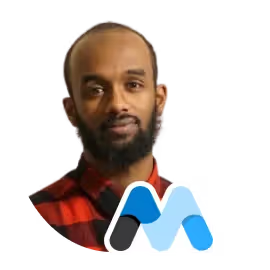
Shuib Abdullah
Create a link to a specific Tab in Webflow
Creating a Tab in Webflow
In Webflow, tabs are a useful feature for organizing and displaying content. This section will guide you through the process of creating and managing tabs in your Webflow project.
Tabs Menu and Tabs Content:
Tabs consist of two main components: the tabs menu and the tabs content.
The tabs menu contains all the tab links. By default, there are three tab links, each represented by a Text block.
Nested inside the tabs content are the tab panes. Each tab pane holds the content that corresponds to a specific tab. By default, there are three panes, matching the number of tab links.

Creating a Tab:
To add more tabs to your project, follow these steps:
- Select any element within the Tabs.
- Access the Element Settings panel.
- Within the Tabs settings, locate and click the plus icon.
By creating a new tab using these steps, a tab link and a tab pane will be automatically generated in the appropriate locations.
Deleting Tabs:
If you need to remove a tab from your project, follow these instructions:
- Select any element within the Tabs.
- Access the Element Settings panel.
- Locate the Tabs Settings section.
- Click the trash icon next to the tab you wish to delete.
Deleting a Tab Link will also remove the corresponding tab pane, and vice versa.
Inserting custom code
Custom code empowers you to customize your website according to your specific requirements. Webflow offers flexibility by allowing users to incorporate custom code throughout the entire site or on individual pages.
Additionally, you can tailor code for specific posts if needed. The best part is that adding custom code is a breeze, regardless of where you want to place it.
For this tutorial, we will use the following custom code:
To integrate this code into your Webflow project, follow these steps:
- Navigate to the page settings of the desired page.
- Locate the location of the </body> tag.
- Paste the provided code just before the </body> tag.
Adding a URL to Your Button
In order to link your button to a specific tab within your Webflow project, you'll need to follow these steps:
- Access the link settings for your button.
- Choose the "External URL" option.
- Customization of the URL is required to ensure proper functionality. Utilize the following framework:
/page-containing-the-tab?tab=tab-id
The first half of the URL, before the question mark, should correspond to the page that contains the desired tab. For instance, if it's an "About Me" page, the URL would be "/about-me?".
In the second half of the URL, you'll need to add the ID you created for the specific tab. This ensures that the page scrolls to the corresponding section.
By following these steps and customizing the URL accordingly, you'll be able to create a button that directs users to a specific tab within your Webflow project.
Add memberships to your Webflow project in minutes.
Over 200 free cloneable Webflow components. No sign up needed.
Add memberships to your React project in minutes.

.webp)







.png)